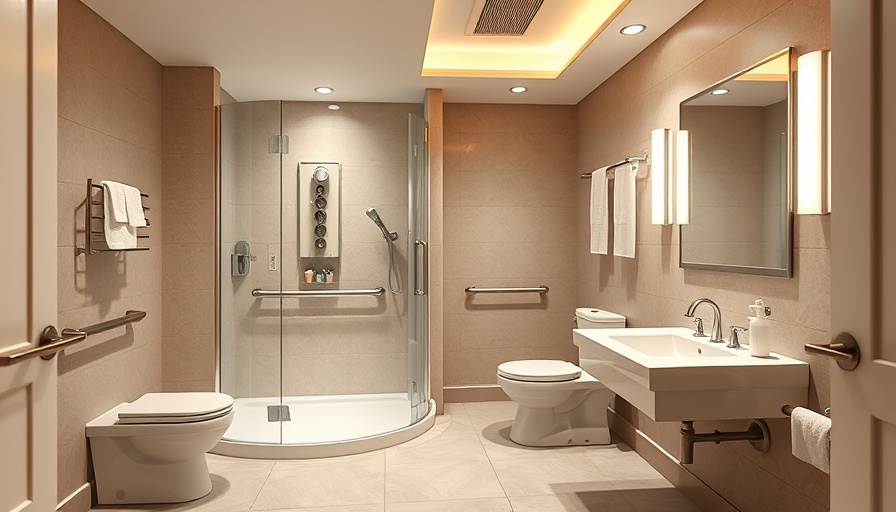
Understanding the Vital Need for Safe Bathrooms
As we age, a multitude of challenges can arise, particularly in areas like mobility and vision. The bathroom, often considered one of the most hazardous spaces in the home, can become a potential threat due to slippery surfaces and difficult access. With senior citizens constituting a growing segment of the population—over 50 million in the U.S. alone—it is increasingly important to adapt these environments to meet their specific needs while promoting safety and independence.
Key Safety Features for a Senior Bathroom
Designing a bathroom tailored for seniors goes beyond aesthetic appeal; it involves integrating features that enhance both safety and usability. One crucial element is the introduction of a zero-threshold shower, which eliminates the barrier that can lead to trips and falls. Traditional bathtubs are not only cumbersome to enter but can pose significant risks of injury. Zero-threshold showers, by contrast, allow for easy access, significantly reducing the likelihood of accidents.
Another critical aspect of bathroom design is anti-slip flooring. Textured tiles or vinyl surfaces are ideal for wet areas, promoting safer navigation. When selecting flooring, it is essential to prioritize materials that provide both safety and grip while ensuring they match the visual design of the space.
The Indispensable Role of Grab Bars
Grab bars are vital safety elements, providing indispensable support for seniors. Their strategic placement can greatly reduce the risk of falls. The most effective locations include near the toilet, in and out of the shower or tub, and beside the vanity. It's crucial to install them at a height that accommodates seniors’ varying abilities, ensuring their ease of use.
Choosing textured grips enhances usability and prevents slipping. Ensuring that these bars are securely anchored supports confidence during bathroom use, allowing seniors to maintain their independence with grace.
The Magic of Non-Slip Mats and Rugs
Non-slip mats or rugs represent a simple yet effective solution to enhancing bathroom safety. Placed both inside and outside the shower area, these mats help mitigate slip risks when seniors transition between wet and dry surfaces. When selecting mats, prioritize models that are water-resistant and machine washable. A rubber backing improves grip, ensuring stability and significantly reducing accident risks.
Importance of Adequate Lighting in Bathroom Safety
Proper lighting is a critical factor often overlooked in bathroom safety. Dim or poorly lit areas can exacerbate vision issues among seniors, increasing the temptation for missteps. Incorporating ample lighting not only enhances visibility but also inspires confidence in navigating the space. Motion-sensor lights and dimmers can add convenience and practicality, ensuring a fully illuminated experience without overwhelming the senses.
Counterarguments: Redefining Bathroom Layout for Independence
While the aforementioned features are essential, some may argue that such modifications are unnecessary or too costly. However, neglecting to prioritize accessible bathroom design can lead to much higher expenses from medical bills and loss of autonomy. A financial investment in safety features can ultimately safeguard seniors’ wellbeing, ensuring they thrive independently in their homes.
Embrace the Benefits of a Senior-Friendly Bathroom
Ultimately, creating a senior-friendly bathroom isn't just about safety—it offers peace of mind for both seniors and their families. It fosters an environment where aging individuals can confidently navigate their daily routines without fear of injury. By implementing basic design elements, caregivers can empower seniors to maintain their independence.
Call to Action: Ensure the Safety of Your Loved Ones
As you reflect on these crucial design features, consider the seniors in your life. Are their bathrooms adequately equipped to support their needs? If not, it may be time to make necessary modifications to promote a safer, more functional bathroom experience. Remember, prioritizing safety today can significantly reduce risks of injuries tomorrow.
 Add Row
Add Row  Add
Add 




Write A Comment